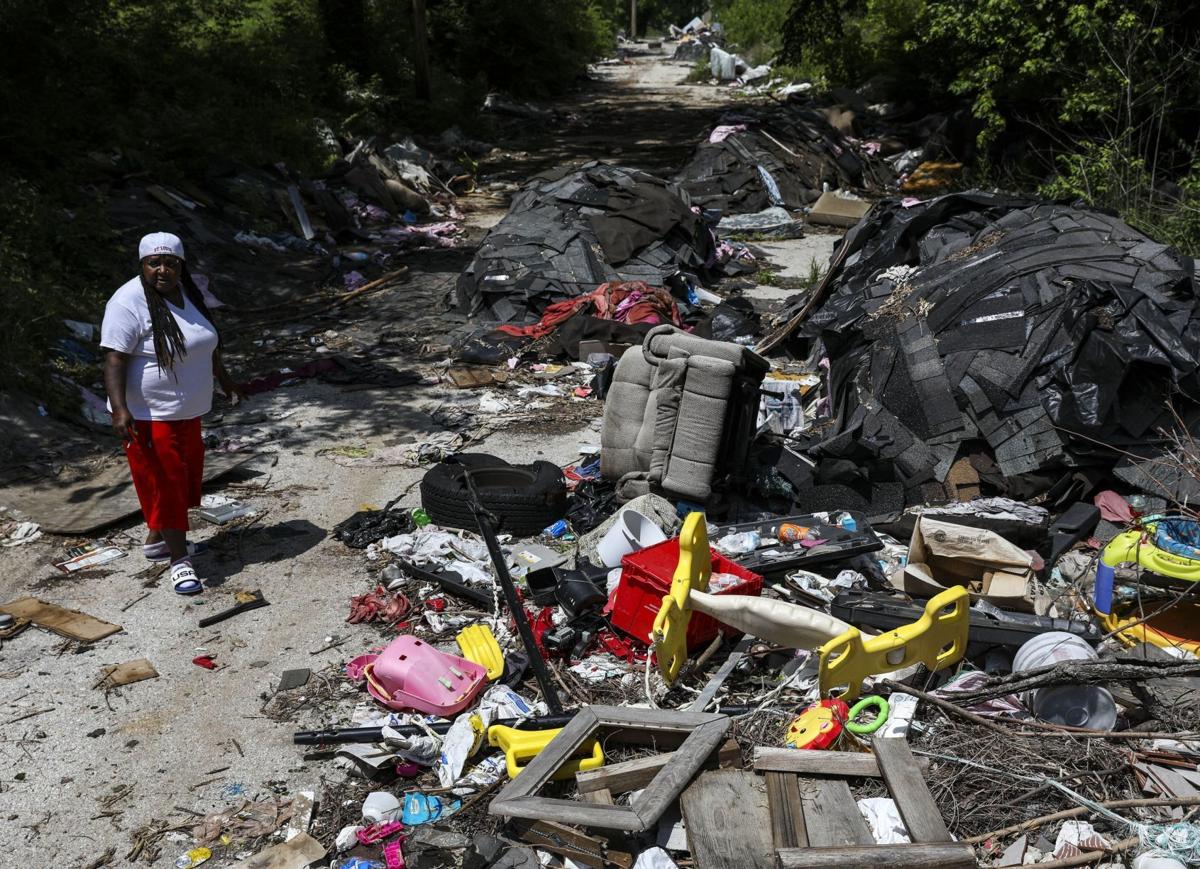Justine Blue waved her hand in a sweeping motion toward the PowerPoint presentation projected on the white board in the first-floor classroom at ├█č┐┤½├Į UniversityŌĆÖs Tegeler Hall.
It was a map of Kinloch, the first city in Missouri to be incorporated by African Americans. The map was broken down by individual lot, most of them now empty, many owned by the city of ├█č┐┤½├Į.
ŌĆ£These were all homes,ŌĆØ she said, talking about the city where she grew up and still lives. Blue is the city manager for Kinloch. ŌĆ£People all lived there.ŌĆØ
Not so much anymore. For a variety of reasons, the biggest of which was the purchase of homes and property in the 1980s by ├█č┐┤½├Į Lambert International Airport for noise abatement, Kinloch is a shadow of its former self.
In the past few years, due in large part to the advocacy of state Rep. Raychel Proudie, D-Ferguson, Kinloch fire Chief Kevin Stewart, Blue and others, regional leaders have started to rally around the idea of cleaning up the historic city in north ├█č┐┤½├Į County, and finding a way to make it viable again.
People are also reading…
It starts with ending the illegal dumping that has plagued the area for years.
What comes next is why Blue was visiting with students at her alma mater. She was meeting with the , a class taught by professors Doug Williams and Robert Lewis, to a mix of law students and urban planning students. Each year, the symposium tackles a problem in the ├█č┐┤½├Į region that could use professional expertise, to give the students some real-world experience.
The challenges in Kinloch ŌĆö specifically to bring back any level of residential growth ŌĆö are substantial. The lots are small and divided among many owners. The zoning isnŌĆÖt up to date. The restrictive deeds placed on the properties by the airport make serious development nearly impossible without some sort of legal action.
But the students have ideas. TheyŌĆÖve been meeting with residents, developers, professors and attorneys. The law students have developed a legal strategy or two to remove the restrictive deeds. The planning students have various proposals to create zoning districts that will allow industrial and commercial development in some areas, housing in others.
The students have been talking with about expanding a planned trail in the area along Maline Creek to make sure it connects with Kinloch Park. They want to create a historic district that celebrates the cityŌĆÖs unique Black history.
Blue listens carefully to every idea and proposal. She takes notes. She tells the students that she will take all their ideas back to the Project Kinloch team. That group of civic leaders includes Proudie; Sen. Brian Williams, D-University City; ├█č┐┤½├Į County Council Chairperson Rita Days and others. The group is meeting regularly to plot a future for Kinloch, which has been neglected for too long.
Jas Cannon, one of the SLU students, explains the students are preparing a community survey to get Kinloch residentsŌĆÖ thoughts. They plan to distribute it door-to-door this month. Blue, who knows her residents well, says devising a plan that can get their support is both a key, and a challenge.
Going back to the airport buyouts, the residents of Kinloch donŌĆÖt have a lot of trust for the various city and county civic leaders who will have to work together to develop a workable plan.
ŌĆ£What we donŌĆÖt have enough of, historically, are allies,ŌĆØ Blue says. There is some progress in that regard. Earlier this year, the countyŌĆÖs parks department applied for a $500,000 grant, which combined with other county funding could be used to refurbish Kinloch Park. ItŌĆÖs a start.
For any progress to be lasting, suggests law student Patrick Ganninger, ŌĆ£the city, county and Kinloch all must be on the same page.ŌĆØ
Blue agrees, and that starts with asking the cityŌĆÖs remaining residents, what they want to see happen.
ŌĆ£The people of Kinloch want development,ŌĆØ Blue tells the students. ŌĆ£What they want most is some promises to be kept. WeŌĆÖre open to anything and everything that people want to throw out. We realize we can never be what we were. We just want to move forward, the best we can.ŌĆØ















